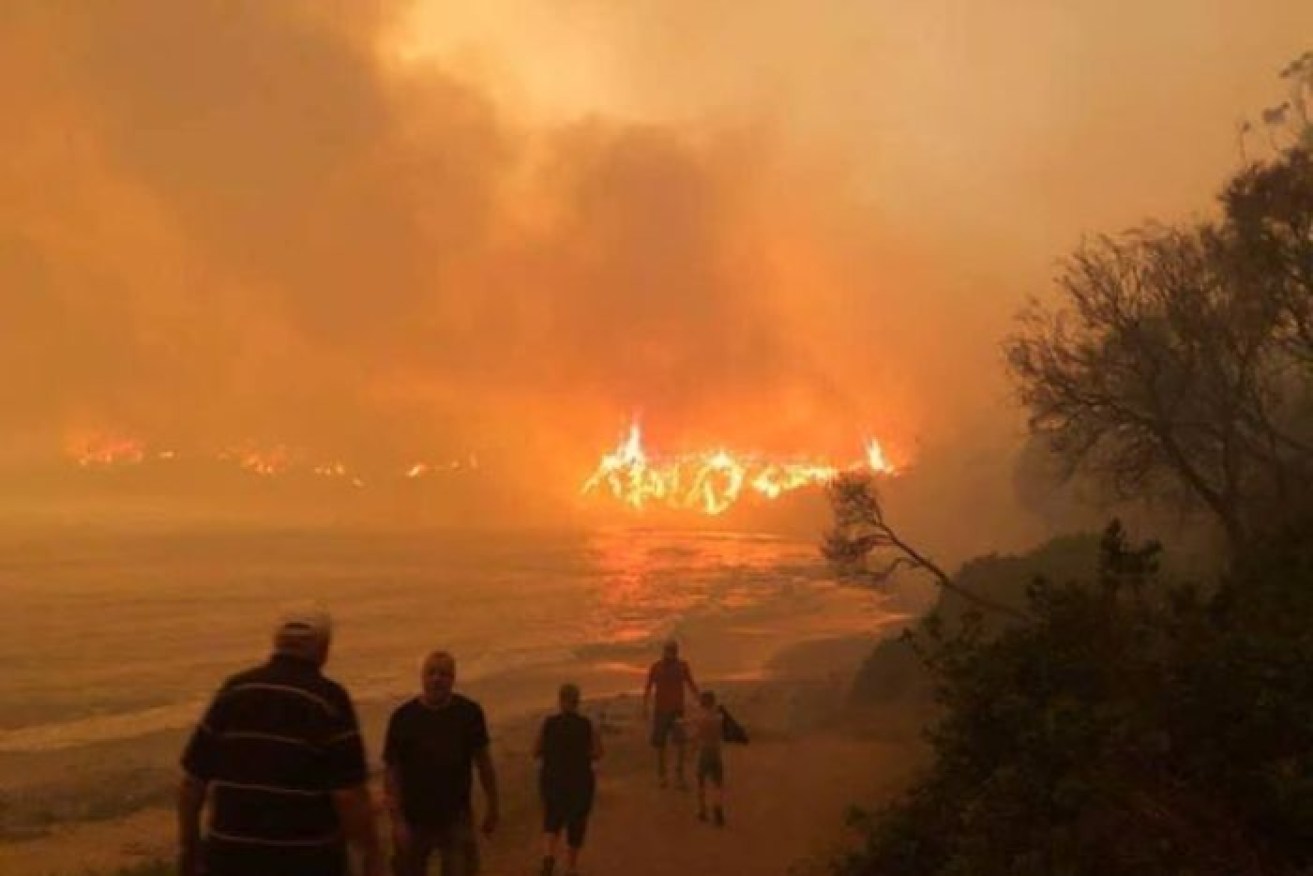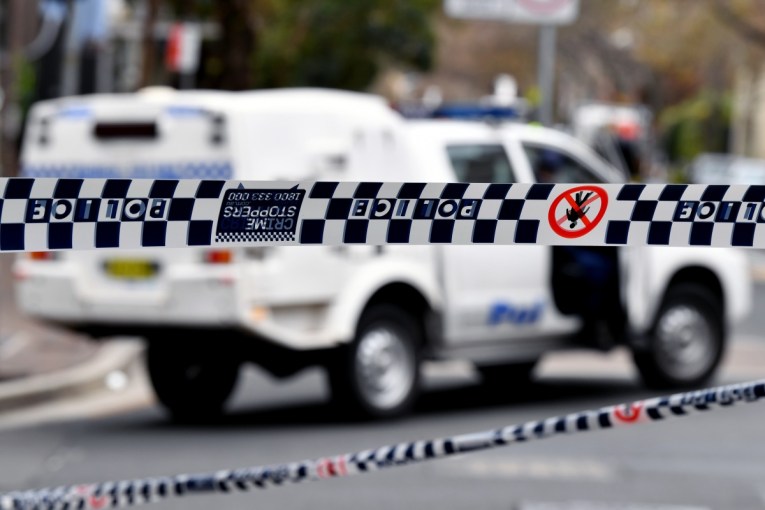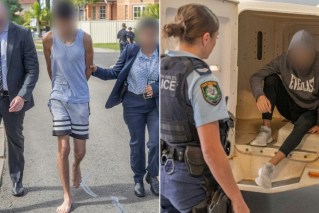NSW bushfire death toll rises to seven as hundreds are left homeless


Evacuees gather at McKenzies Beach, south of Batemans Bay. Photo: ABC
The death toll from the NSW fires has risen to seven – and is expected to climb further – after the body of a man fleeing the flames was found in a burnt-out car near the Princes Highway at Yatte Yattah, near Lake Conjola.
Three of the seven dead were confirmed on Wednesday, including the man at Yatte Yattah, a body found in a vehicle in Sussex Inlet and a body found outside a home at Coolagolite, near Cobargo.
The fatalities are on top of four others this week:
- Father and son, Robert Salway, 63, and Patrick Salway, 29, who died defending their dairy farm at Cobargo, near Bega, on New Year’s eve;
- A 70-year-old man found dead late on Tuesday outside a home at Yatte Yattah, west of Lake Conjola;
- Volunteer firefighter Sam McPaul, 28, who died near Albury when his truck rolled in a freak firestorm.
“Unfortunately, I hate the number of homes we’ve lost but at the end of the day this is about people’s lives. That’s the most important thing right now,” NSW police deputy commissioner Gary Worboys said.
In Victoria, the first victim of the East Gippsland fires was named on Wednesday as Mick Roberts, a great-grandfather who was found dead in his Buchan home.
The death toll across all states this fire season is now at 15. Authorities expect it to rise further as emergency workers sift through the fire damage.
A 72-year-old man is missing at Belowra, west of Narooma, and a 70-year-old woman who was earlier thought to be missing in Cajola Park was actually rescued by family members.

RFS volunteer Sam McPaul, left, pictured with wife Megan, died in a truck rollover.
More than 170 homes have also been destroyed in NSW since Monday in a devastating start to 2020. That number is also expected to climb.
As the nation celebrated the new year on Tuesday and Wednesday, thousands of residents in small communities on the NSW south coast and in eastern Victoria were forced to flee uncontrollable blazes.
Raging flames ripped through towns, consumed homes, farms and cars and left hundreds of people homeless at the start of a new decade.
Hardest hit was Conjola Park, about three hours south of Sydney, where 89 homes have been lost.

The main street of Cobargo was destroyed on New Year’s eve. Photo: AAP
In Malua Bay, about five hours south of Sydney, 40 homes are confirmed lost and in nearby Rosedale 15 homes were destroyed.
Damage has also been wrought in the Snowy Mountains and towards Tumbarumba, as well as on the NSW central coast.
About 4000 people in the seaside town of Mallacoota in eastern Victoria sought shelter on the foreshore as fire burned through the town.
An emergency warning was issued late on Wednesday for Dunns Road, in the Snowy Valleys local government area.
Some of the worst-affected communities along the coast battled bushfires into Tuesday night with no power and limited telecommunications.
About 40,000 homes and businesses from South Nowra to Wyndham could be without electricity for an extended period after about 40 power poles were destroyed.
RFS Commissioner Shane Fitzsimmons said he expected the death toll to rise.
“The preliminary advice is that we will, sadly, see the number of people, the number of lives lost, that will climb this afternoon,” Commissioner Fitzsimmons said.
Deputy Commissioner Rob Rogers said on Wednesday said it was “by no means the end of the losses”.
He said emergency services were doing all they could to get to people stuck across the south coast.
“Some of these people, they may be hurt, but they also may be very concerned about where they’re at and want to reconnect with people,” he said.
“Today has been about trying to reconnect with people that have been isolated in areas.
“I don’t think that work is finished yet.”
NSW Premier Gladys Berejiklian said communities should brace for the weekend and more fatalities being revealed in coming days.
“Many people who have been here for decades are just completely shocked that the fire reached as far as it did,” she said at Batemans Bay, an area that has suffered huge loss.

Victoria’s East Gippsland region has also been savaged this week. Photo: AAP
In Canberra, smoke forced hundreds of residents to wear face masks on Wednesday. The air quality in the nation’s capital was the worst in the world at 9.30am Wednesday, according to an international air quality index, pipping smoggy New Delhi in India.
While revellers in major cities spent New Year’s eve marvelling at fireworks spectaculars, firefighters across multiple states were still battling out of control fires.
#rosedale #NotMyPrimeMinister receiving some videos and photos from family. I’ll keep posting. pic.twitter.com/7MsRg2OkEB
— mia (@mia49929232) January 1, 2020
In NSW, fire conditions were expected to ease on Wednesday after a cool change – which brought brought gusts of up to 80km/h and dry lightning strikes – crossed the state.
-with AAP







